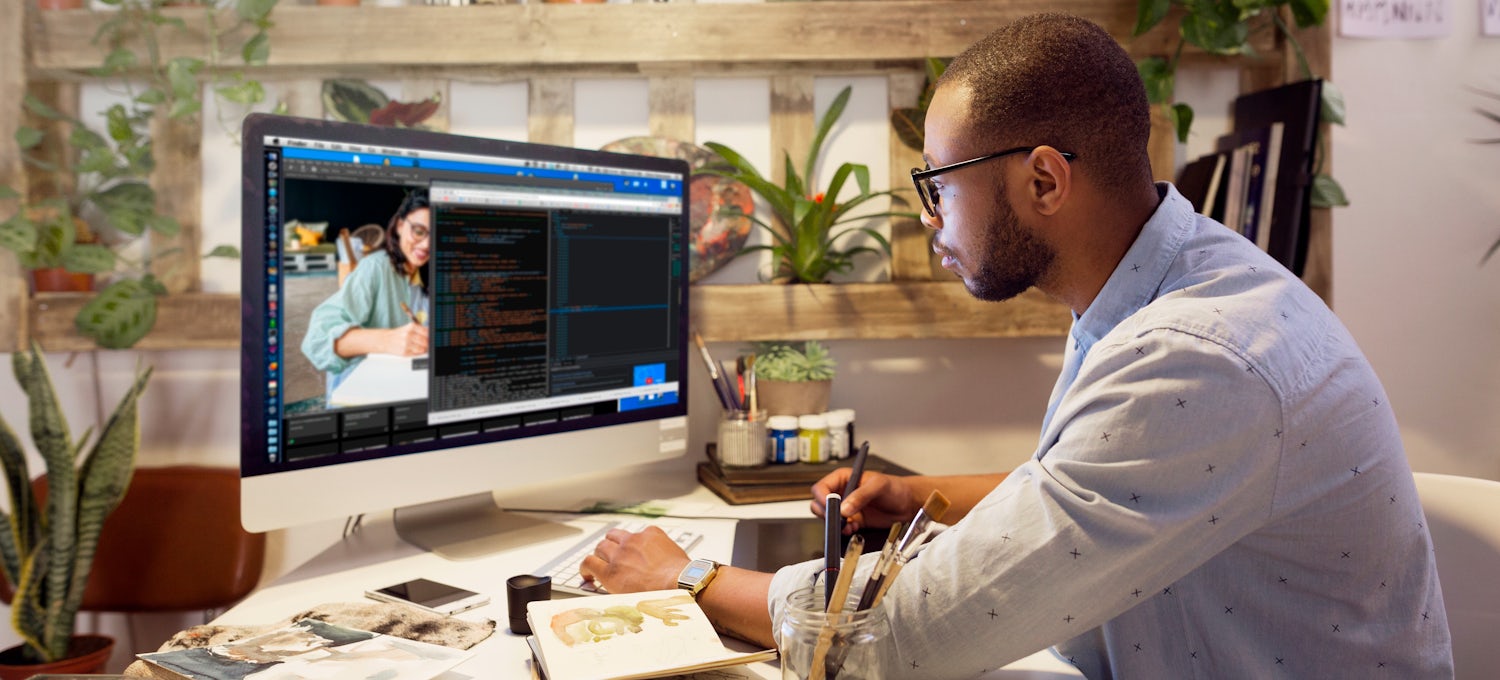Exactly How to Improve Internet Site Performance with Better Web Design
Wiki Article
Just How to Attain a Balanced and Aesthetic Web Layout That Fulfills the Diverse Needs of Customers and Organizations Alike
Attaining a balanced and aesthetic web style that effectively satisfies the varied demands of individuals and companies needs a nuanced understanding of both style principles and user habits. The obstacle exists in making certain that these aspects work together cohesively while addressing the distinct requirements of diverse user groups.Recognizing Individual Demands
As website design increasingly becomes a vital element of user experience, recognizing user requires arises as a fundamental action in producing reliable electronic atmospheres. web design. A comprehensive grasp of individual needs is important for establishing web sites that not just bring in visitors but also engage and keep them. This understanding can be accomplished via numerous techniques, including customer research, surveys, and use testing, which offer insights right into customer preferences, behaviors, and discomfort factors
In addition, recognizing individual requires encompasses responsiveness and access, guaranteeing that all users, no matter of gadget or capability, can navigate the website effortlessly. By installing user-centric concepts into the design process, internet developers can create well balanced atmospheres that satisfy the varied demands of both customers and companies. Ultimately, prioritizing individual understanding causes extra significant interactions and boosted overall satisfaction with the electronic experience.
Principles of Aesthetic Design
A user-centered approach normally brings about the factor to consider of visual layout concepts, which play a critical role in shaping the general customer experience. web design. Efficient visual layout equilibriums aspects such as color, typography, imagery, and layout to develop an aesthetically appealing interface that resonates with individualsShade concept is fundamental, as it stimulates emotions and influences perception; hence, a thoughtful shade combination can enhance brand name identity while guaranteeing readability. Typography, on the other hand, adds to the layout's clearness and pecking order, guiding users via the web content flawlessly. Selecting typefaces that straighten with the brand name's individuality promotes recognition and involvement.
Images is an additional critical element, offering context and aesthetic rate of interest. Top notch images should matter and support the total story while staying clear of mess.
Furthermore, the design has to ensure a rational flow of details. Making use of concepts such as alignment, closeness, and whitespace enhances organization and promotes navigation.
Integrating these visual style principles not only draws in individuals but also fosters count on and reputation, eventually causing an extra satisfying communication. By harmonizing aesthetic aspects, developers can create an engaging and memorable experience that fulfills the varied needs of customers and services alike.
Importance of Functionality
Use stands as a keystone of efficient website design, straight impacting how customers interact with a site. It incorporates the convenience with which individuals can browse, comprehend, and engage with internet site web content. A properly designed website promotes smooth interaction, making certain that users can effectively accomplish their tasks without unnecessary disappointment. When usability is prioritized, it improves user contentment, resulting in boosted involvement and higher conversion rates.Furthermore, a concentrate on use fosters trust and credibility. Websites that are intuitive and very easy to navigate are viewed as specialist and reputable, motivating users to return. On the other hand, inadequate usability can lead to high bounce rates, as individuals promptly abandon websites that frustrate them.
Furthermore, usability is essential for meeting varied individual needs. A website has to deal with various demographics, guaranteeing that all users, regardless of their technical know-how, can gain access to and use its attributes. This inclusivity not just broadens the customer base but additionally boosts the overall effectiveness of the website in achieving business objectives. Eventually, by focusing on usability, internet developers develop an even more appealing, trustworthy, and effective online experience that benefits both users and businesses alike.
Accessibility Requirements in Design
Including ease of access requirements in web style is necessary for creating an inclusive online environment. These criteria, primarily laid out by the Web Content Availability Guidelines (WCAG), make certain that all customers, including those with impairments, can effectively communicate with electronic content. By adhering to these standards, developers can improve usability across different platforms and tools.Key facets of accessibility consist of giving alternate message for photos, guaranteeing enough shade comparison, and utilizing clear and constant why not check here navigation. In addition, carrying out keyboard navigability permits users that can not make use of a mouse to accessibility all performances. It is likewise essential to take into consideration the use of screen viewers, which require well-structured HTML to share information properly.
Furthermore, sticking to accessibility standards not just advantages individuals with disabilities however also improves the general individual experience. A properly designed, easily accessible web site can enhance engagement, reduce bounce rates, and expand the audience reach. In an affordable electronic landscape, prioritizing availability is not just a legal responsibility; it is an ethical crucial that mirrors a dedication to social duty and equal rights. Ultimately, integrating availability right into web style is a crucial action toward accomplishing a well balanced and aesthetic digital visibility that offers the requirements of all customers.
Harmonizing Visuals and Capability
While striking a harmonious equilibrium between visuals and capability is essential in internet style, attaining this equilibrium typically postures a challenge for developers. An aesthetically attractive site can captivate users, drawing them right into the material; nonetheless, if it does not have performance, the user experience can rapidly degrade. Alternatively, highly functional websites might prioritize usability but risk appearing unappealing or boring.
Furthermore, interactive aspects need to complement the total layout, supplying engaging experiences without overwhelming users. Components like switches and forms should be clearly noticeable and easy to connect with, reinforcing functionality.
Inevitably, effective website design synthesizes visuals and capability, creating an engaging atmosphere that satisfies the diverse requirements of individuals and businesses alike (web design). By carefully thinking about how each style choice effects both appearances and functionality, designers can craft websites that reverberate with customers while satisfying their designated goals
Final Thought
In final thought, accomplishing a well balanced and aesthetic redirected here internet design needs an extensive my site method that integrates user-centered design concepts with use and ease of access considerations. By comprehending user needs and adhering to aesthetic design concepts, developers can create aesthetically attractive interfaces that retain performance. The focus on use and adherence to accessibility requirements ensures that diverse individual teams can interact perfectly with electronic platforms. Eventually, this holistic approach promotes interaction and fulfillment, benefiting both individuals and organizations alike.Report this wiki page